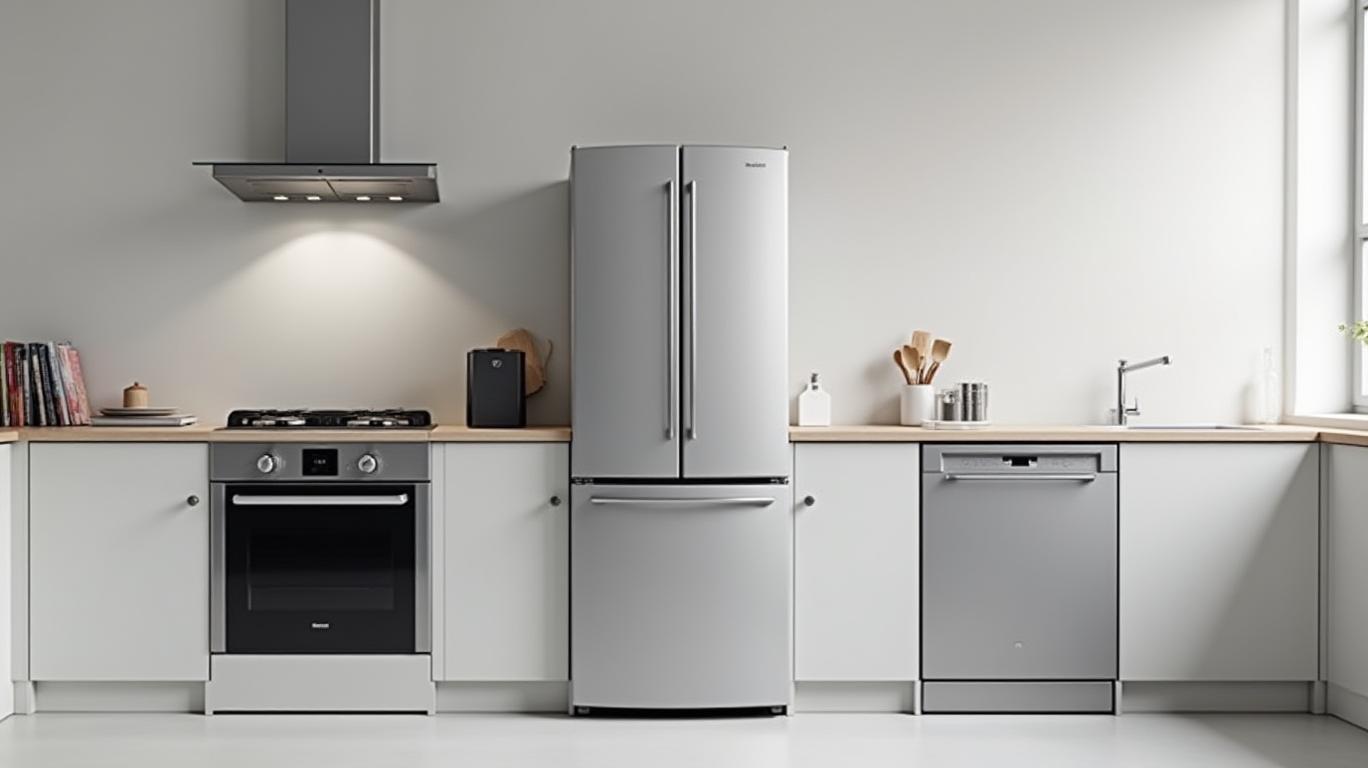Whirlpool Cut to Junk: Can Margin Gains Offset Structural Challenges?
Moody’s Investors Service’s decision to downgrade Whirlpool Corporation (NYSE: WHR) to junk status in early 2025 underscores the appliance giant’s struggle to navigate a perfect storm of weak consumer demand, high debt, and tariff-related disruptions. The rating agency lowered Whirlpool’s senior unsecured debt to Ba1 from Baa3, marking a stark shift to speculative-grade status, while maintaining a negative outlook due to lingering risks. For investors, the downgrade raises critical questions: Is Whirlpool’s financial strategy sustainable? Can margin improvements and tariff tailwinds offset its debt burden and sluggish demand? And what does this mean for the stock?
The Downgrade Decision: A Warning for Investors
Moody’s cited weak consumer demand, elevated financial leverage, and reliance on dividends over debt reduction as key drivers of the downgrade. As of March 2025, Whirlpool’s net debt-to-EBITDA ratio stood at 4.9x, far exceeding its 2.0x target, with the company prioritizing a $1.75-per-share dividend in both Q1 and Q2 over deleveraging. This has left Whirlpool with negative free cash flow, a red flag for creditworthiness. The agency also highlighted risks tied to the U.S. housing market, which remains sluggish, and Whirlpool’s exposure to cyclical consumer spending.
The stock has underperformed the broader market since the rating action, reflecting investor skepticism about its debt-heavy balance sheet and slow recovery in key markets.
Key Drivers of the Downgrade
- Demand Headwinds:
- Weak U.S. housing starts and consumer reticence have dampened demand for major appliances, which account for 80% of domestic sales. Whirlpool’s reliance on U.S. production—unlike cheaper imports—has also made it vulnerable to pricing pressures.
Tariff Loopholes: Asian competitors exploited pre-July 2025 tariff deadlines to flood the U.S. market with discounted appliances, temporarily undercutting Whirlpool’s domestic pricing power.
Financial Leverage:
Whirlpool’s debt-to-EBITDA ratio of 4.9x is nearly double its peers’ average and far above investment-grade thresholds. Moody’s noted that even under optimistic scenarios, leverage would remain elevated at 4.5x by end-2026.
Dividend Overhang:
- The $1.75-per-share dividend—maintained despite weak cash flow—has constrained Whirlpool’s ability to reduce debt. The payout has been a point of pride for the company, which has raised it for 70 consecutive years.
Whirlpool’s Defense: Margins and Tariff Tailwinds
While Moody’s paints a cautionary picture, Whirlpool has shown resilience in certain areas:
- Margin Improvements: In Q1 2025, Whirlpool reported an ongoing EBIT margin of 5.9%, up 160 basis points year-over-year, driven by pricing actions and $200 million in structural cost cuts. The SDA Global segment (e.g., KitchenAid and JennAir) delivered a 18.5% margin, reflecting strong demand for premium products.
- Tariff Turnaround: New tariffs, including Section 232 and IEEPA measures, are expected to eliminate a $70-per-unit cost disadvantage Whirlpool faced due to competitors’ tariff loopholes. By mid-2025, these policies should create a “level playing field,” boosting margins and market share.
- Liquidity Cushion: Whirlpool has $3.5 billion in credit facilities, $1 billion in cash, and plans to monetize its India business to reduce debt.

Risks and Near-Term Challenges
Despite these positives, Whirlpool faces significant hurdles:
- Debt Maturities: Over $1.8 billion in debt comes due by year-end, including a $1.5 billion bond maturing in October 2025. Renewed borrowing costs could rise if credit markets tighten.
- Tariff Uncertainty: While the long-term outlook is positive, near-term inventory overhang from Asian competitors’ preloading could pressure prices and margins through mid-2025.
- Housing Market Drag: U.S. housing starts remain 15% below pre-pandemic levels, and Whirlpool’s sales are tied to new construction and renovations.
The Bottom Line: A Risky, but Potentially Rewarding Play
Whirlpool’s downgrade to junk status is a clear warning, but the company’s strategic moves—tariff-driven margin tailwinds, cost discipline, and premium product innovation—suggest it could stabilize its finances over the next 12–18 months. Investors must weigh two critical factors:
1. Debt Reduction: Can Whirlpool shrink its leverage to 3.5x or below by end-2026, as management claims? This will depend on free cash flow improvements and debt repayments.
2. Demand Recovery: Will the U.S. housing market rebound, and can Whirlpool capitalize on its domestic production advantage once tariffs fully take effect?
The chart shows leverage peaking at 5.0x in 2025 before gradual declines—a trend that must accelerate to avoid further downgrades.
Conclusion: A Junk-Status Buy for the Patient
Whirlpool’s junk rating reflects its current vulnerabilities, but its long-term prospects hinge on executing a turnaround. With $500–$600 million in projected free cash flow in 2025 and tariff tailwinds, the company has a path to deleverage. However, the negative outlook and reliance on U.S. housing recovery mean investors should proceed cautiously.
For now, the stock appears oversold, trading at a 12.5x forward P/E, below its five-year average of 15x. But with debt risks still elevated, this is a speculative bet. Investors with a long-term horizon and tolerance for volatility might consider a small position, while others may want to wait for clearer signs of margin expansion and demand pickup.
In the end, Whirlpool’s journey from junk to investment grade will depend on whether its operational discipline and tariff-driven advantages can overcome the headwinds of high debt and weak consumer sentiment.

Comments
No comments yet